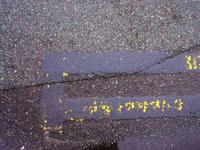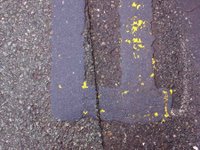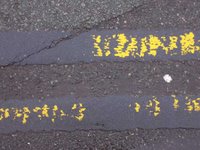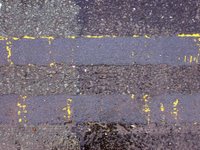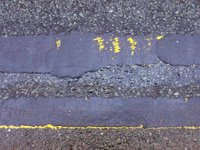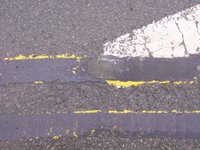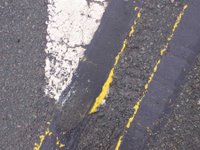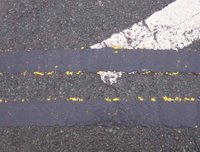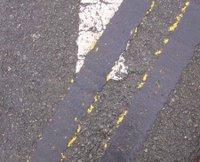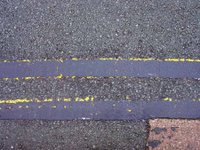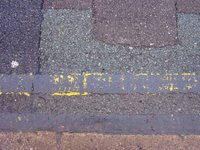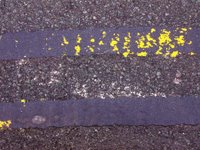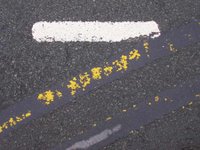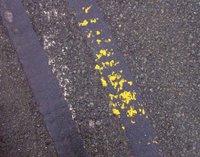Some of these images, mostly taken at a new location, have particularly prominent & impressive fissures in the underlying road surface, which add an interesting & dramatic element of ‘drawing’ into the compositions in which they occur. Present too are joins, overlaps or gaps where brushstrokes end & begin – which strikes me at the moment as being rather Rymanesque (* see below) - another engaging 'painterly' touch that lends one to viewing the images from an artistic perspective & as suggesting themselves ever more insistently suitable subject matter for transformation into paintings.





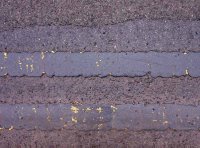















I thought, on the occasion of this post, & especially since I’ve again mentioned an artist & their work in relation to my photographs of the double black lines, that it would be a good idea to include some of the images/artists I have in mind as informing the photographs as being seen & read in the tradition of certain types of painting, & of suggesting themselves as being potential suitable subject matter for a body of painting(s).
In terms of black paintings specifically, here are 4 examples.
The first is of the original of the species, Malevich’s ‘Black Square’ - one of a number of his early 20th century explorations into the monochrome - which is exactly what it says it is. Notice how time has aged this painting, the surface deteriorating into a network of cracks, & how such detail links it physically to the surface textures of the road & some of the black painted lines in my photos.

Next is one of Frank Stella’s ‘Black Paintings’. The light lines here are not the ‘figure’ in the basic composition, drawn upon the surface, but rather the unpainted ground of the canvas upon which the black paint is applied. Again, the traces of yellow, the thin yellow lines, showing through the overpainted black to a greater or lesser degree in the double black lines photos relate to such an image.

Thirdly, one of Ad Reinhardt’s monochrome ‘Abstract Paintings’ ('No. 5' in this case), where the various blacks used in the composition – each tending very subtly towards red, green, blue, etc – are virtually indistinguishable, only revealing themselves & their difference from their neighbours through prolonged viewing. Having seen such paintings, I know how intense & rewarding such an experience can be. Here, the subtle changes in tone & hue relate to the patchwork nature & textures of the road surfaces, & the ‘different’ black of the painted lines upon them. As with the Stella example, simplicity of composition is also intended to relate to the double black lines images.
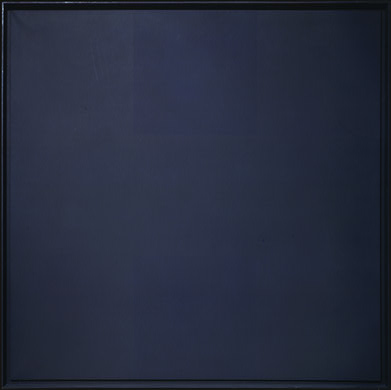
Here's a detail of the above, showing a clearer distinction between the various subtly different black areas.

Finally, a contemporary example of a black monochrome, Gillian Carnegie’s ‘Black Square’ as exhibited at the Turner Prize 2005 show. This painting, which is engaged critically with Malevich’s example, actually features representational image content & thus the illusion of three dimensional space within its heavily & laboriously textured surface (which, through the use of relief in this manner, does in fact have an actual three-dimensional quality), within the genre of the landscape, in the form of a night-time woodland scene of tree boles, leaf-strewn paths, etc. Again, the double black lines photos rendered as paintings would employ such painterly surface textures & feature representational content as faithfully reproduced images of the road surfaces & the painted lines.

This is the painting as seen in an exhibition context,with a different play of light upon its surface.

Moving on, this time into the inverse realm of the white monochrome, & some examples that may, in fact be even more influential upon my thinking & looking in relation to the double black lines images.
Firstly, a couple of variations on Jasper Johns’ ‘White Flag’, which was a development of his original, seminal & preceding ‘Flag’ painting.



As may be observed, especially in the first ‘White Flag’ image, the collage-&-encaustic-(wax)-fixed-pigment technique used here gives such a variety of subtle surface textures, hues & tones, & this, in addition to the ‘given’ subject matter & its linear graphic simplicity, & the areas of ground showing through the painted surface, relates very closely I think – more so even than the black monochromes quoted above - to the possibilities inherent in rendering the double black lines images as paintings with rich potential for painterly exploration.
These are the 'White Flag' images inverted to black, to perhaps illustrate something of this point.
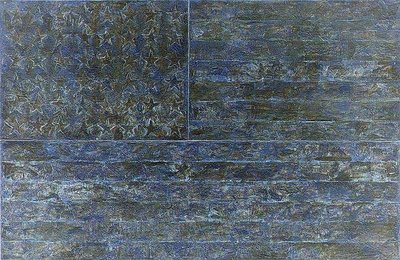

Finally, a couple of *Robert Ryman's white paintings, illustrating but a frustrating, alas, little of the nature of the application of the paint, in regular strokes & lines, the process of which gives the image a grid-like composition. As with Johns, Ryman's technique results in a great variety of subtle textural & tonal effects upon the surface of the painting, many minor variations upon the major theme of 'whiteness', allowing one to appreciate the painterly quality of such, & which is something I would hope to achieve should the double black lines images ever be realised as paintings.
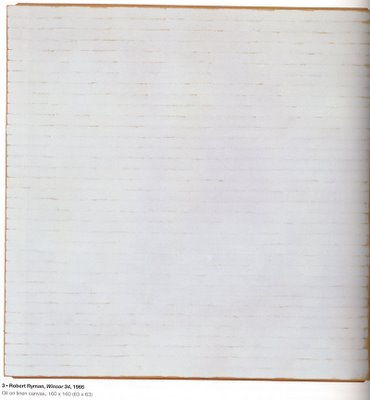
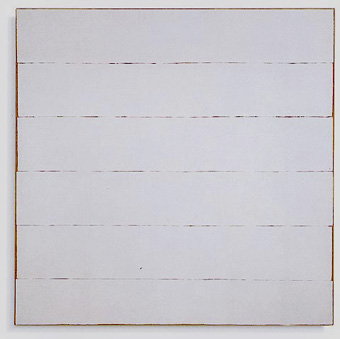
Again, the inverse of the latter Ryman image alludes to the double black lines images &, hopefully, helps to contextualize these images as seen from a painterly perspective & envisaged as existing within the context of continuing a certain tradition of painting.

